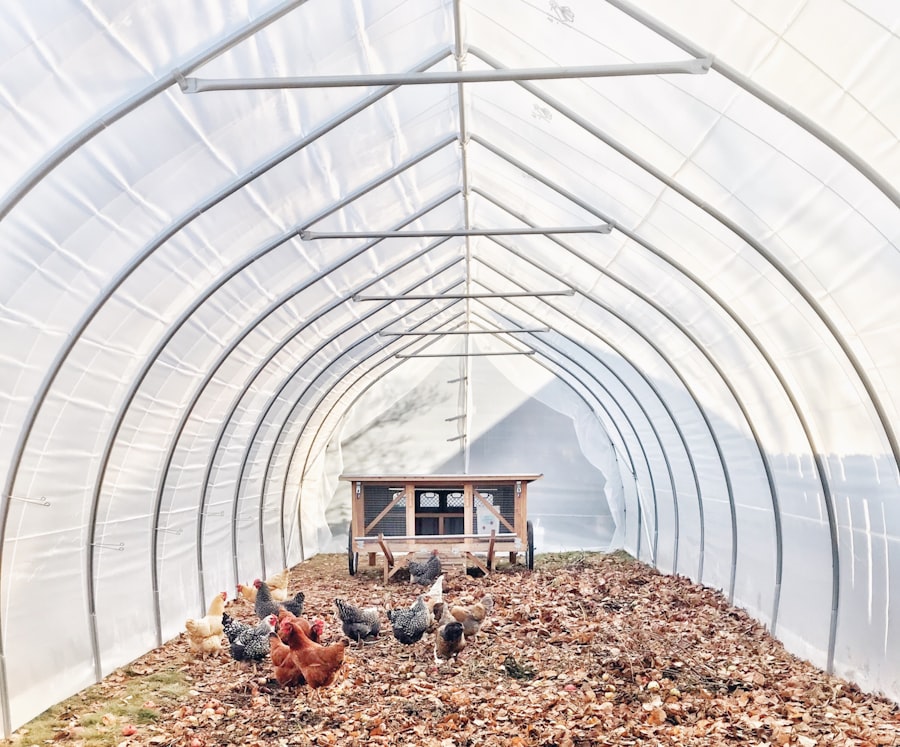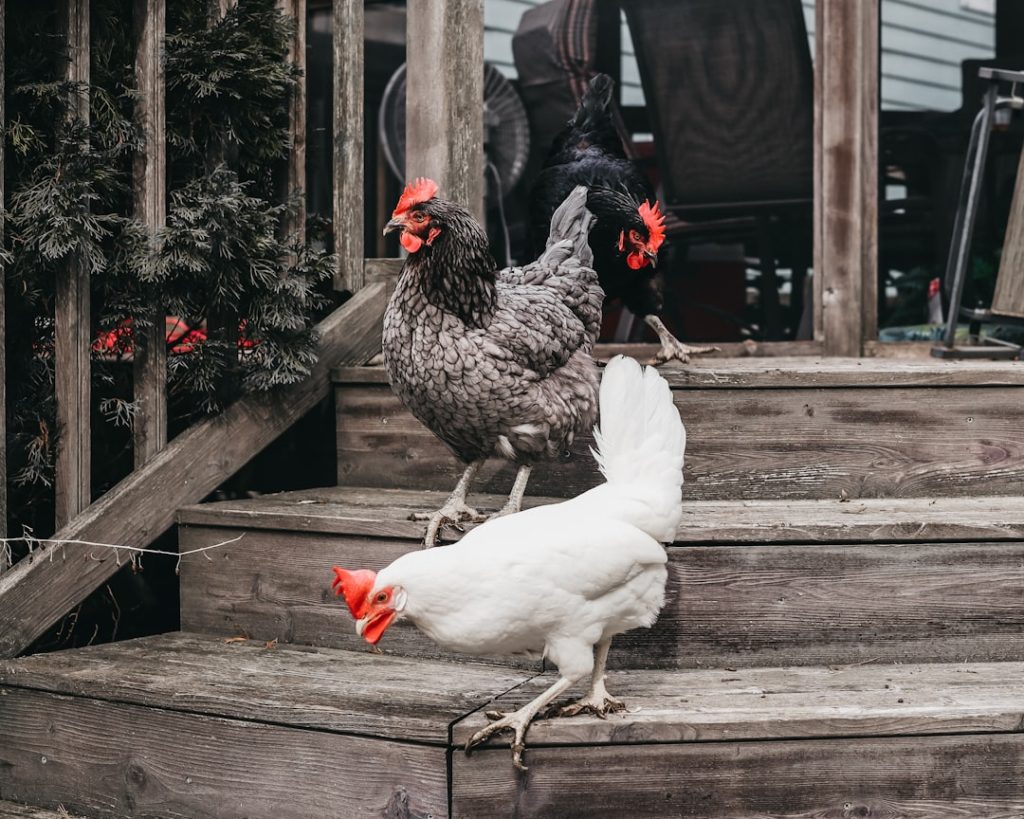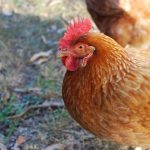Breeding pens are crucial for successful chicken breeding programs. These specialized enclosures provide a controlled environment for mating, egg-laying, and brooding, ensuring optimal health and productivity of breeding stock. By designating a specific area for breeding, farmers can effectively monitor and manage chicken mating behavior, select superior breeding stock, and maintain suitable conditions for hatching and brooding.
These pens help prevent inbreeding and maintain genetic diversity within the flock, which is essential for producing robust and healthy offspring. Breeding pens play a vital role in chicken breeding programs, facilitating the production of high-quality chicks for meat or egg production. In addition to enabling controlled breeding, these pens offer a safe and secure environment for breeding stock.
Separating breeding birds from the main flock protects them from potential harm or stress caused by other chickens. This isolation also reduces competition for resources such as food and nesting space, ensuring breeding stock receives necessary care and attention for successful reproduction. Furthermore, breeding pens allow farmers to closely monitor the health and behavior of breeding birds, enabling quick identification and resolution of any issues that may arise.
Overall, breeding pens provide a controlled and secure environment for breeding chickens, promoting the health and productivity of breeding stock and the success of the breeding program.
Table of Contents
- 1 Setting Up the Ideal Breeding Pen
- 2 Selecting the Right Breeding Stock
- 3 Maintaining a Healthy Environment for Breeding
- 4 Monitoring and Managing Breeding Behavior
- 5 Ensuring Successful Hatching and Brooding
- 6 Evaluating and Improving Breeding Results
- 7 FAQs
- 7.1 What is a breeding pen for chickens?
- 7.2 What are the benefits of using breeding pens for chickens?
- 7.3 How are breeding pens for chickens set up?
- 7.4 What should be considered when selecting chickens for breeding pens?
- 7.5 How can breeding pens for chickens be managed to ensure successful breeding?
Key Takeaways
- Breeding pens are crucial for maintaining a controlled environment for chicken breeding, ensuring the health and quality of the offspring.
- Setting up the ideal breeding pen involves providing adequate space, nesting areas, and protection from predators and the elements.
- Selecting the right breeding stock is essential for producing healthy and high-quality chicks, considering factors such as genetics, health, and temperament.
- Maintaining a healthy environment for breeding involves regular cleaning, providing proper nutrition, and monitoring for signs of illness or stress.
- Monitoring and managing breeding behavior is important for ensuring successful mating, egg production, and overall breeding success.
- Ensuring successful hatching and brooding requires proper temperature, humidity, and turning of eggs, as well as providing a safe and nurturing environment for the chicks.
- Evaluating and improving breeding results involves keeping detailed records, analyzing breeding outcomes, and making informed decisions for future breeding practices.
Setting Up the Ideal Breeding Pen
Creating a Comfortable Environment
When setting up a breeding pen for chickens, it is essential to create a comfortable and secure environment that meets the specific needs of the breeding stock. The pen should be spacious enough to accommodate the breeding birds without overcrowding, providing ample room for mating, egg laying, and brooding. It should also be equipped with nesting boxes or areas where the hens can lay their eggs in privacy and safety.
Ensuring Safety and Security
The pen should be constructed with sturdy materials that can withstand the wear and tear of daily use, ensuring the safety and security of the breeding birds. Furthermore, the breeding pen should be designed to provide adequate ventilation and natural light, creating a healthy and comfortable environment for the breeding stock.
Providing Optimal Conditions
Proper ventilation helps to regulate temperature and humidity levels within the pen, preventing the buildup of harmful gases and reducing the risk of respiratory issues in the breeding birds. Natural light is also important for maintaining the birds’ circadian rhythms and promoting healthy reproductive behavior. Additionally, the pen should be equipped with clean bedding material, such as straw or wood shavings, to provide a comfortable and hygienic nesting area for the breeding birds.
Key Considerations for Success
Overall, setting up the ideal breeding pen requires careful consideration of the space, materials, ventilation, and lighting to ensure the health and productivity of the breeding stock.
Selecting the Right Breeding Stock

Selecting the right breeding stock is crucial for producing high-quality chicks with desirable traits for meat or egg production. When choosing breeding birds, farmers should look for individuals that exhibit strong physical characteristics, such as good conformation, size, and weight for their breed. These traits are indicative of overall health and vitality in the breeding stock, which is essential for producing robust offspring.
Additionally, farmers should select birds with good temperament and behavior, as these traits can be passed on to their offspring, contributing to a calm and manageable flock. Furthermore, genetic diversity is important when selecting breeding stock to prevent inbreeding and maintain a healthy gene pool within the flock. Farmers should avoid mating closely related birds and instead seek out unrelated individuals with diverse genetic backgrounds.
This diversity helps to reduce the risk of genetic abnormalities and promotes strong immune systems in the offspring. Finally, farmers should consider the production performance of potential breeding birds, such as egg production or growth rate, to ensure that they are selecting individuals with desirable traits for their specific breeding goals. Overall, selecting the right breeding stock is essential for producing high-quality chicks with strong genetics and desirable traits for meat or egg production.
Maintaining a Healthy Environment for Breeding
Maintaining a healthy environment is crucial for successful breeding in chickens. This includes providing clean water, nutritious feed, and proper sanitation within the breeding pen. Clean water is essential for hydration and overall health in the breeding stock, while nutritious feed provides essential nutrients for reproductive health and egg production.
Additionally, proper sanitation helps to prevent the spread of disease and parasites within the breeding pen, ensuring the health and productivity of the breeding birds. Furthermore, maintaining a healthy environment also involves managing temperature and humidity levels within the breeding pen. Proper temperature regulation is crucial for successful egg incubation and brooding, as fluctuations in temperature can negatively impact hatch rates and chick survival.
Similarly, maintaining optimal humidity levels is important for preventing egg dehydration during incubation and promoting healthy chick development. Farmers should regularly monitor temperature and humidity levels within the breeding pen and make adjustments as needed to create an ideal environment for successful hatching and brooding. Overall, maintaining a healthy environment within the breeding pen is essential for ensuring the health and productivity of the breeding stock.
Monitoring and Managing Breeding Behavior
Monitoring and managing breeding behavior is essential for successful reproduction in chickens. Farmers should closely observe mating behavior within the breeding pen to ensure that all individuals are mating successfully and regularly. This may involve introducing new mates if certain individuals are not mating or separating aggressive or incompatible pairs to prevent injury or stress.
Additionally, farmers should monitor egg laying behavior to ensure that all hens are laying regularly and in suitable nesting areas within the pen. Furthermore, managing breeding behavior also involves providing adequate privacy and security for the breeding birds within the pen. This may include providing secluded nesting areas or boxes where hens can lay their eggs in peace without disturbance from other birds.
Additionally, farmers should minimize disruptions within the pen during mating or egg laying periods to reduce stress on the breeding stock. By closely monitoring and managing breeding behavior, farmers can ensure that their breeding stock is mating successfully, laying eggs regularly, and exhibiting healthy reproductive behavior within the pen. Overall, monitoring and managing breeding behavior is crucial for successful reproduction in chickens.
Ensuring Successful Hatching and Brooding

Egg Fertility and Nesting Areas
Farmers can achieve this by collecting eggs for fertility testing or using techniques such as candling to assess embryo development within the eggs. Additionally, providing suitable nesting areas with clean bedding material for hens to lay their eggs in privacy and safety is essential.
Creating a Suitable Brooding Environment
Ensuring successful brooding involves creating a warm and secure environment for hens to incubate their eggs and care for their chicks. This can be achieved by providing broody hens with secluded nesting areas where they can safely incubate their eggs without disturbance from other birds.
Optimal Conditions for Incubation and Chick Development
Farmers should also monitor temperature and humidity levels within the brooding area to ensure optimal conditions for egg incubation and chick development. Providing nutritious feed and clean water for broody hens is also important for supporting their health and energy levels during incubation and brooding. By ensuring successful hatching and brooding, farmers can produce healthy chicks with strong genetics and vitality for meat or egg production.
Evaluating and Improving Breeding Results
Evaluating and improving breeding results is an ongoing process that involves assessing the performance of offspring from previous breeding cycles and making adjustments to improve future outcomes. Farmers should regularly evaluate traits such as growth rate, conformation, egg production, and overall health in offspring from previous breeding cycles to identify areas for improvement. This may involve keeping detailed records of individual bird performance or conducting genetic testing to assess heritability of specific traits.
Furthermore, farmers should use this information to make informed decisions about selecting future breeding stock with desirable traits for meat or egg production. This may involve culling underperforming individuals from the breeding program or introducing new genetic lines with strong performance in desired traits. Additionally, farmers should consider implementing selective breeding techniques to further improve specific traits in their flock over time.
By evaluating and improving breeding results, farmers can continuously enhance the quality of their breeding stock and produce high-quality chicks with desirable traits for meat or egg production. In conclusion, breeding pens play a critical role in successful chicken breeding programs by providing a controlled environment for mating, egg laying, and brooding. Setting up an ideal breeding pen involves creating a comfortable and secure environment that meets the specific needs of the breeding stock while maintaining a healthy environment is crucial for successful reproduction in chickens by providing clean water, nutritious feed, proper sanitation within the pen as well as managing temperature and humidity levels within it.
Selecting the right breeding stock is essential for producing high-quality chicks with desirable traits while monitoring and managing breeding behavior is crucial for successful reproduction in chickens by closely observing mating behavior within the pen as well as providing adequate privacy and security for them within it. Ensuring successful hatching and brooding is essential for producing healthy chicks with strong genetics while evaluating and improving breeding results is an ongoing process that involves assessing offspring performance from previous cycles to make informed decisions about selecting future breeding stock with desirable traits.
If you’re interested in learning more about breeding pens for chickens, you may also want to check out this article on mating season for turkeys. Understanding the mating season for different poultry can help you plan and manage your breeding pens more effectively.
FAQs
What is a breeding pen for chickens?
A breeding pen for chickens is a designated area where specific chickens are housed for the purpose of mating and producing offspring. These pens are typically designed to provide a comfortable and safe environment for the chickens to engage in natural mating behaviors.
What are the benefits of using breeding pens for chickens?
Breeding pens allow for controlled mating between specific chickens, which can help breeders to produce offspring with desired traits such as egg production, meat quality, or specific genetic characteristics. It also helps to prevent unwanted mating and ensures that the parentage of the offspring is known.
How are breeding pens for chickens set up?
Breeding pens for chickens are typically set up with nesting boxes, perches, and adequate space for the chickens to move around and engage in mating behaviors. The pens should also provide protection from predators and the elements, as well as access to food and water.
What should be considered when selecting chickens for breeding pens?
When selecting chickens for breeding pens, breeders should consider the desired traits they want to promote in the offspring, such as egg production, meat quality, or specific genetic characteristics. It’s also important to choose chickens that are healthy, free from genetic defects, and have good reproductive capabilities.
How can breeding pens for chickens be managed to ensure successful breeding?
Managing breeding pens for chickens involves monitoring the mating behaviors of the chickens, ensuring that the pens are kept clean and well-maintained, and providing proper nutrition and healthcare for the chickens. Breeders should also keep detailed records of the parentage and lineage of the chickens to track breeding outcomes.
Meet Walter, the feathered-friend fanatic of Florida! Nestled in the sunshine state, Walter struts through life with his feathered companions, clucking his way to happiness. With a coop that’s fancier than a five-star hotel, he’s the Don Juan of the chicken world. When he’s not teaching his hens to do the cha-cha, you’ll find him in a heated debate with his prized rooster, Sir Clucks-a-Lot. Walter’s poultry passion is no yolk; he’s the sunny-side-up guy you never knew you needed in your flock of friends!







